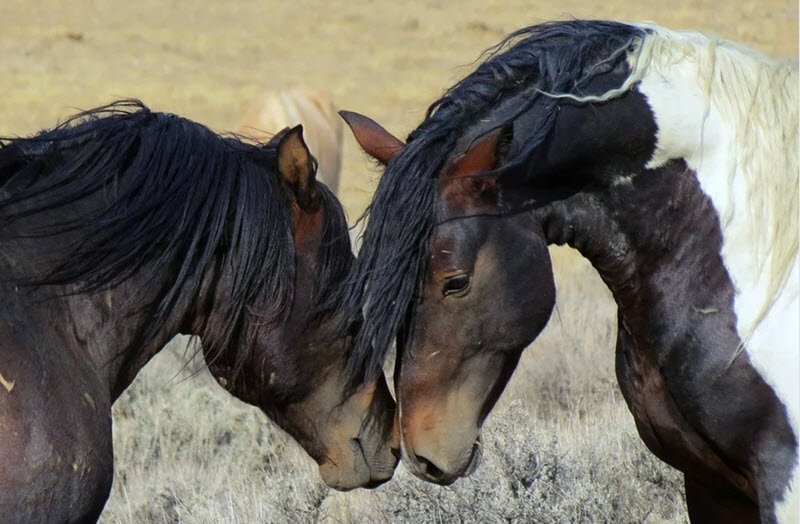Contents
The Mustang is a United States horse breed that chiefly hails from horses brought to the Americas by the Spaniards during the colonial era. A lot of mustangs are kept by private owners, but there are also large populations of feral mustangs living in places such as Nevada and Oregon.
In August 2017, U.S. authorities estimated that there were over 72,000 free-roaming on-range mustangs in the United States. There were also another 45,000 feral mustangs kept in holding facilities. (Source: U.S. Bureau of Land Management.)
Over half of all the free-roaming mustangs in the United States live in the state of Nevada. Other examples of states with notable free-roaming mustang populations are Oregon, Utah, California, Wyoming and Montana.
As mentioned above, the mustangs chiefly hail from horses brought over by the Spaniards during the colonial era, but a lot of time has passed since then, and several other horse breeds and horse types have contributed their DNA to the mustangs over the centuries. The exact genetic makeup of two herds can vary quite a lot due to differences in local history. Generally speaking, more isolated mustang populations tend to look more like those original Spanish horses, while mustangs in less isolated areas have had a greater influx of DNA from other horses.
Having lived a feral life for so many generations, mustangs tend to be hardy and surefooted horses highly adapted to local conditions. Natural selection has favoured certain traits while suppressing others. Endurance is a very notable characteristic in the breed.

Is the mustang a wild horse?
Free-roaming mustangs without any owner are sometimes colloquially referred to as “wild horses”, but feral horses is a more correct term since they all hail from domesticated horses.
A symbol of the West
In 1971, the U.S. Congress declared that “wild free-roaming horses and burros are living symbols of the historic and pioneer spirit of the West, which continue to contribute to the diversity of life forms within the Nation and enrich the lives of the American people.”
What does a mustang look like?
Mustangs come in a wide range of colours and patterns. Even the coat type can vary – there are for instance two herd management areas in Nevada where you can encounter curly-coated mustangs.
If we look at the vast Herd Management Areas maintained by the U.S. Bureau of Land Management (BLM), most mustangs that live there have the body of a light riding horse, but some break from this pattern and are built more like draft horses.
As mentioned above, there is a lot of local variation within the breed. There are for instance herds in Idaho that, quite a long time ago, adopted Thoroughbred and Quarter Horse stallions that had been abandoned by their owners.
The American Mustang Association is no longer active
The American Mustang Association used to keep a breed standard for mustangs. This association is no longer active.

Who manages the feral mustangs?
The feral free-roaming mustangs have no owners but are managed by the U.S. Bureau of Land Management (BLM). To keep populations down, they cull the herds. In recent years, BLM´s culling of feral mustangs (and the practice of keeping them in long-term holding pens) have met with considerable criticism by animal rights groups.
Can I adopt a mustang?
Yes, if you fulfil the requirements, you can adopt a mustang from the BLM. Contact the BLM for more detailed information.
https://www.blm.gov/programs/wild-horse-and-burro/adoption-and-sales
At the time of writing, public interest in adopting mustangs is far too small to satisfy the need for new homes for mustangs that will otherwise be culled.
